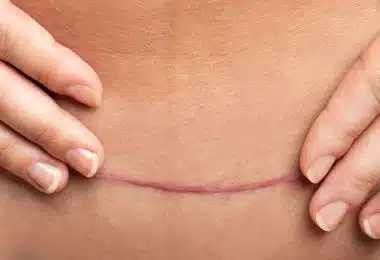
Surgical Treatment Options for Fibroids
January 30, 2024
Surgical Treatment Options for Fibroids
January 30, 2024
Caesarean Section
Caesarean delivery is a method used in cases where normal delivery is not possible or hazardous for foetus or pregnant women. It is a surgical operation performed with an incision made in the abdomen and then in the uterus by giving anaesthesia to the pregnant woman in the operating room. The focus of the decision to deliver a cesarean section is the health of the mother and baby.
Reasons Requiring Cesarean Section Birth
The reasons leading to cesarean delivery may be related to the mother and the baby, as well as by the placenta or by problems that arise during the normal birth process.
Maternal causes
- Previous uterine surgery,
- Abnormal pelvic bone structure,
- Genital area infections,
- Systemic diseases,
- Birth canal problems.
Baby-related causes
- Baby weight is 4000 gr. and above,
- Finding problems with the baby’s position,
- Problems with the entrance to the birth tract
Causes related to the placenta
- Closure of the birth canal by the placenta (placenta previa),
- The placenta separates before birth, causing bleeding (placental abruption).
Problems at the time of birth
In adverse cases encountered during normal birth (the umbilical cord problems, the birth process takes longer than normal, etc.), cesarean delivery is decided.
Cesarean Section Procedure
Cesarean delivery is performed in the operating room. Anesthesia is applied to the pregnant woman.
A urinary catheter is placed to ensure that the bladder is empty.
A 7-layer incision is applied to the upper side of the pubic hair line, including the skin, subcutaneous, muscle sheath, anterior abdominal wall, outer peritoneum, inner peritoneum and uterine muscle, with an incision of approximately 10 cm in length.

Image-1: Caesarean section
The amniotic sac is ruptured, the baby is removed, the cord is cut, and the placenta is taken out.
After the inside of the uterus is cleaned, the cut folds are sutured.
Since self-melting suture material is used, there is no need for suture removal.
Important Considerations Before and After Cesarean Section
Paying attention to some issues before and after cesarean delivery will prevent the negativities that may arise during and after cesarean delivery and will enable the mother to get through the process faster.
You should not eat or drink until about 8 hours before the surgery.
Before the operation, night sleep should be taken and you should be comfortable.
Light foods and drinks that do not bloat should be preferred in the preoperative day.
When standing up after the surgery, slow action should be taken and support should be taken in order not to damage the stitches.
Movements that will put pressure on the abdomen, open the stitches, heavy lifting and clothes that tighten the abdomen should be avoided.
In order not to be constipated after cesarean section, care should be taken to consume plenty of water, fibrous foods, vegetables and fruits that do not cause gas should be consumed, and a liquid-based diet should be consumed.
Extreme attention should be paid to hygiene against the danger of infection in the suture area and uterus.

